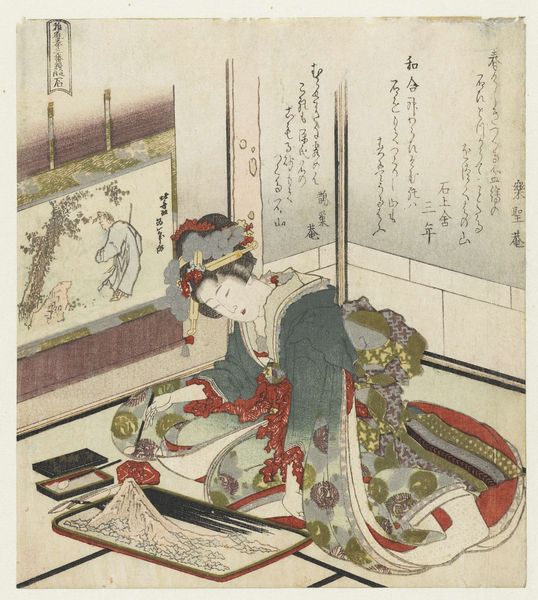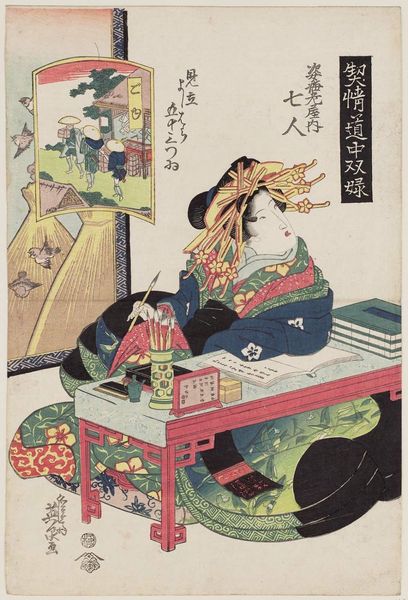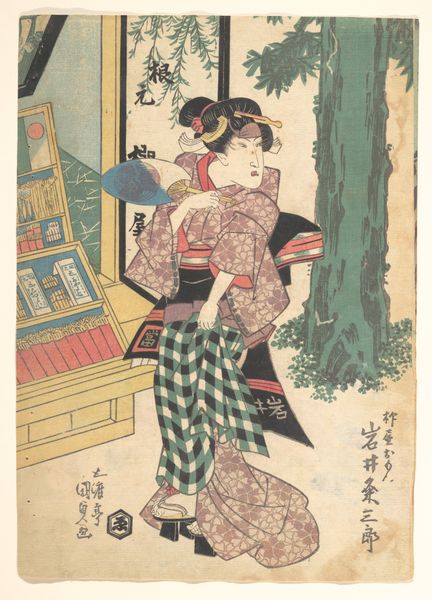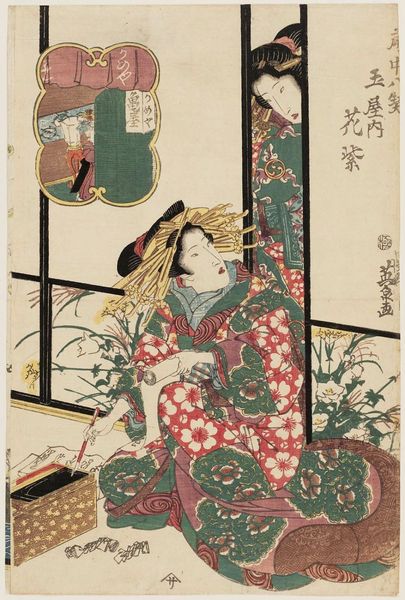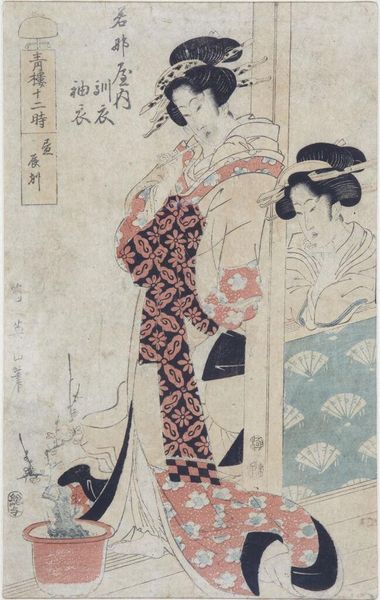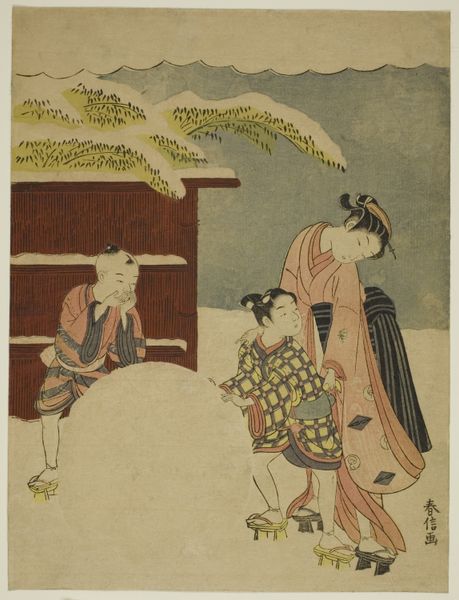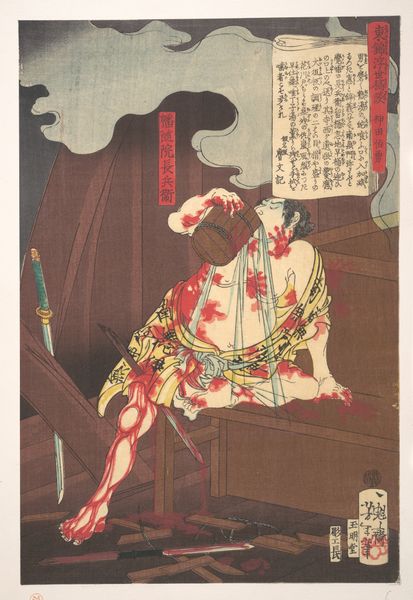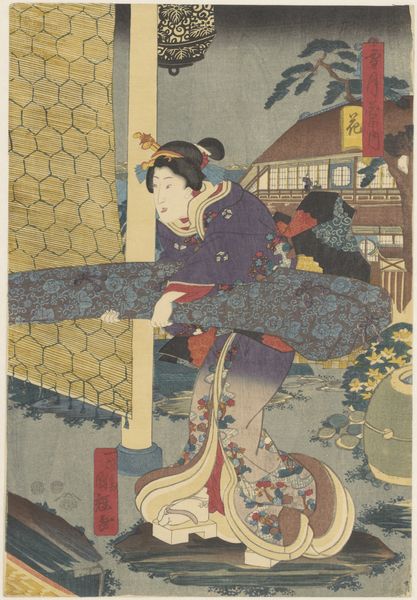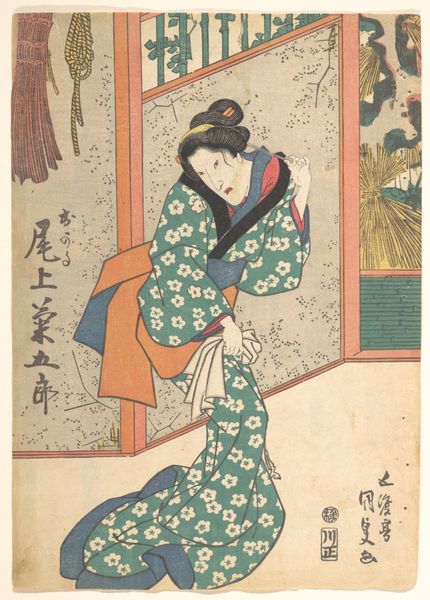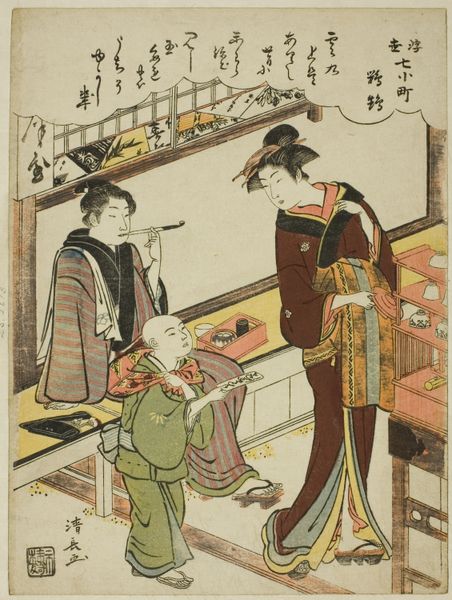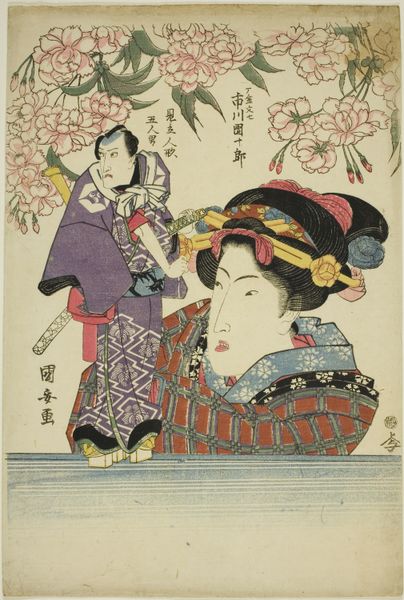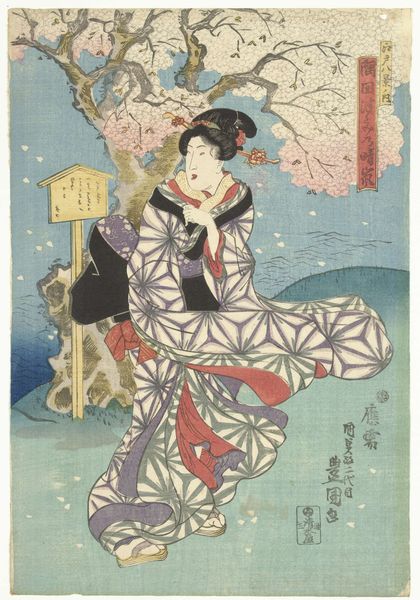
# print
#
asian-art
#
landscape
#
ukiyo-e
#
figuration
#
genre-painting
Copyright: Public domain
Editor: This is Keisai Eisen's "The Third Month, Cherry Blossoms in Naka-no-chō," a woodblock print. There's a melancholic mood to it, a lone woman reading, seemingly isolated despite the implied beauty of the cherry blossoms just outside. How do you read this image? Curator: What strikes me is how Eisen situates this woman, likely a courtesan, within a very specific socioeconomic context. Ukiyo-e prints like this were popular, but they also offered a glimpse into the complex realities of Edo-period Japan, including the licensed pleasure districts. Note how the interior is both elegant and confining. How might that tension speak to the limited agency of women in this society? Editor: So, you're saying that the print is not just a pretty picture of cherry blossoms and a beautiful woman, but also a commentary on gender and social roles? Curator: Precisely. The beauty is deliberate – designed to attract. But let's think critically about who this image was made *for*, largely a male audience. The image participates in constructing and circulating ideas about femininity and desire, potentially reinforcing unequal power dynamics. What are your thoughts about the male gaze and art like this? Editor: That adds a whole layer of complexity. It's making me think about who gets to control the narrative, then and now. It makes one want to find works made by female Japanese artists from the period and ask "how might *their* work be different from those made by men, if at all?" Curator: Absolutely. It’s through that interrogation and historical contextualization that we can challenge these traditional, often biased, frameworks of interpretation. It is interesting that this artwork has cherry blossoms – flowers known for their fleeting beauty. This reminds us to look beyond pretty pictures and instead examine artwork and the power structures they create.
Comments
No comments
Be the first to comment and join the conversation on the ultimate creative platform.
